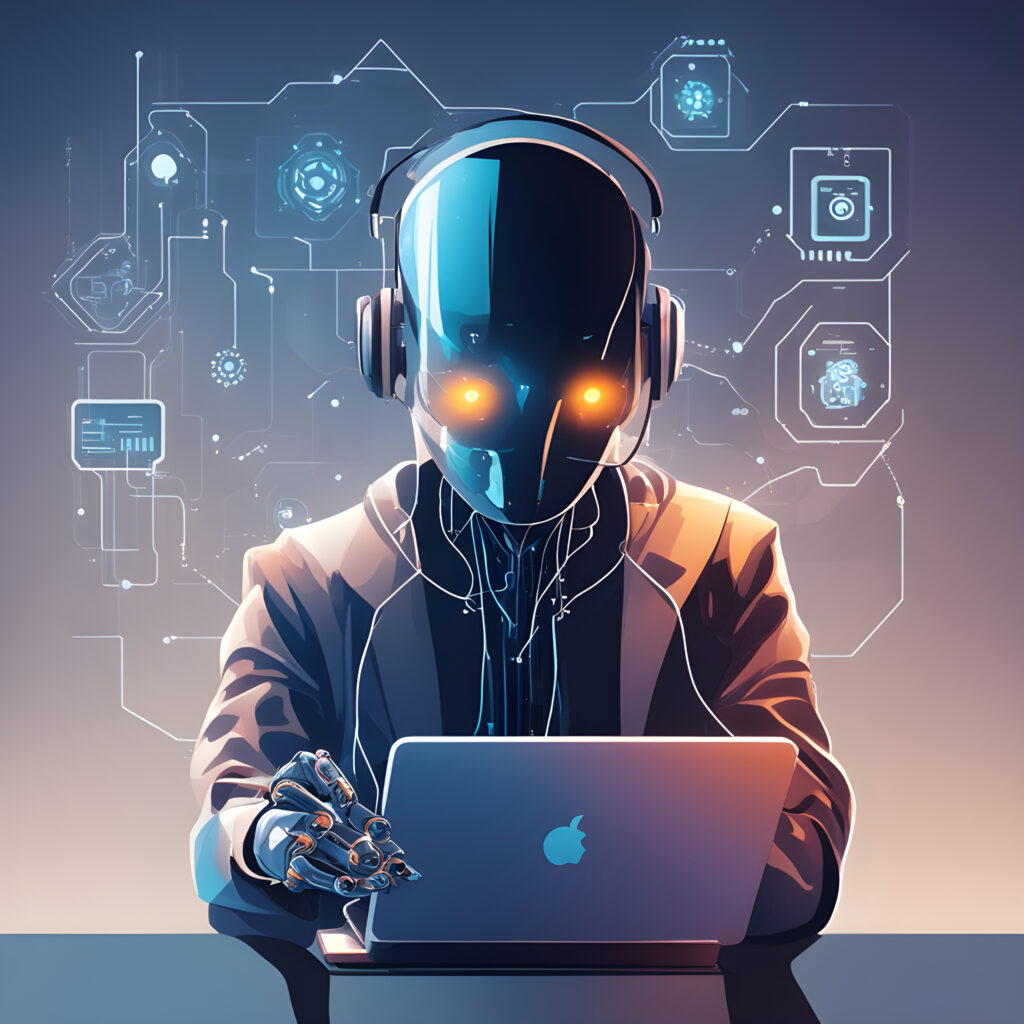
It’s important to note that the use of artificial intelligence (AI) in hacking is a concern, as it can be used both defensively and offensively. While AI has the potential to enhance cybersecurity measures, it can also be leveraged by malicious actors to conduct more sophisticated and targeted attacks. Here are some 8 ways AI can be used in hacking.
8, Artificial Intelligence Tactics used in Targeted Attacks
Machine Learning in Malware Detection:
AI algorithms, particularly machine learning models, can be used to analyze patterns in large datasets to identify and classify malware. However, attackers can use similar techniques to create malware that evades detection by learning from the security measures in place.
Generative Adversarial Networks (GANs) for Deepfakes:
GANs are a type of AI architecture that can generate realistic-looking images, videos, or text. Hackers can use GANs to create convincing deepfake content, such as videos of high-profile individuals saying or doing things they never did. This can be used for disinformation campaigns or to manipulate public opinion.
Automated Exploitation of Vulnerabilities:
AI can automate the process of identifying and exploiting vulnerabilities in software systems. This can lead to faster and more efficient attacks, as AI algorithms can quickly analyze code and discover potential weaknesses that may go unnoticed by traditional methods.
AI-Powered Phishing Attacks:
Machine learning algorithms can analyze massive datasets to understand individual behaviors, preferences, and communication patterns. This information can be utilized to craft highly personalized and convincing phishing messages, increasing the chances of success in tricking individuals into divulging sensitive information.
Natural Language Processing (NLP) in Social Engineering:
NLP, a subset of AI, can be employed in social engineering attacks to understand and mimic human communication styles. This makes it possible to create phishing emails, messages, or chatbots that closely resemble legitimate communication, making it more difficult for users to discern the malicious intent.
AI-Enhanced Reconnaissance:
AI tools can analyze large amounts of data from various sources, such as social media, public records, and online platforms, to gather information about potential targets. This aids hackers in better understanding their victims and crafting more targeted and effective attacks.
Autonomous Cyber Weapons:
Advanced AI systems can be used to create autonomous cyber weapons that can adapt and evolve their strategies in real-time during an attack. This dynamic behavior can make it challenging for defenders to predict and counteract the actions of these cyber weapons.
Machine Learning Evasion Techniques:
Attackers can use machine learning themselves to develop evasion techniques. By analyzing the behavior of security systems, they can adjust their attack strategies to avoid detection, creating a cat-and-mouse game between attackers and defenders.
It’s crucial for cybersecurity professionals to stay abreast of the evolving landscape of AI in hacking and continually update their defense mechanisms. Employing a combination of traditional cybersecurity measures, AI-enhanced defense systems, and ethical hacking practices can help organizations stay resilient against emerging threats. Additionally, fostering a culture of cybersecurity awareness among users is essential to mitigate the success of social engineering attacks.
As such any organization which aspire to sustain IT hygiene should consider securing all, starting from their employees Smart Device, Laptop/Desktop, On-Site Servers, IOT Devices, Hosted Servers & Services, Hosted applications, etc. Bigger Organization such as Banks, etc since they have their own Security Team and follow Industry regulatory standards such as PCI-DSS should be able to tackle with some extra effort. But this is not an easy feat for an organization which doesn’t have in-house IT Security Team. Since the IT Team is inundated with many day-to-day task advance security aspects are mostly slipped. What we can recommend is for smaller organization hire an external service provider company with solid & credible IT security Team & background.
We offer many products & services revolving around Cybersecurity to which helps organizations to sustain and evolve. Wan’t to learn more about our services, please contact us. Our Certified & well experienced team looking forward to help you.

